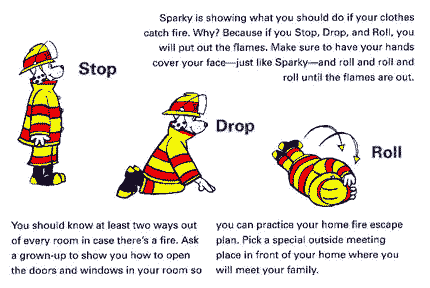It also gives details of related legal duties and obligations on employers and links to further information.
Quick links:
- What are the main risks from electricity?
- Who is most at risk from electricity?
- Legal duties and obligations around electricity
- Assessing the risks from electricity
- Basic electrical safety
- Underground and overhead electrical supplies
- Further information on electricity and safety
- This webpage available in other languages
Good practices:
- Use other forms of power where possible
- Reduce the voltage
- Use Residual Current Devices (RCDs) for extra safety
- Maintain your electrical equipment and installations
- Work safely
What are the risks from electricity?
Harm can be caused to any person when they are exposed to ‘live parts’ that are either touched directly or indirectly by means of some conducting object or material. Voltages over 50 volts AC or 120 volts DC are considered hazardous.
Electricity can kill. Each year about 1000 accidents at work involving electric shocks or burns are reported to the Health and Safety Executive (HSE). Around 30 of these are fatal, most of them arising from contact with overhead or underground power cables.
Shocks from faulty equipment can cause severe and permanent injury and can also lead to indirect injuries, due to falls from ladders, scaffolds, or other work platforms.
Faulty electrical appliances can also lead to fires. As well as causing injuries and loss of life, fires cause damage to plant, equipment and property.
Who is most at risk from electricity?
Anyone can be exposed to the dangers of electricity while at work and everyone should be made aware of the dangers.
Those most at risk include maintenance staff, those working with electrical plant, equipment and machinery, and people working in harsh environments such as construction sites.
Most electrical accidents occur because individuals:
- are working on or near equipment which is thought to be dead but which is, in fact, live
- are working on or near equipment which is known to be live, but where those involved are without adequate training or appropriate equipment, or they have not taken adequate precautions
- misuse equipment or use electrical equipment which they know to be faulty.
Legal duties and obligations around electricity
As well as a moral duty on employers to protect employees and members of the public, General Health and Safety Legislation covers all employers and workplaces.
In addition, specific duties and obligations are laid out in the following regulations:
The Electricity at Work Regulations 1989 These regulations apply to all aspects of the use of electricity within the workplace from electrical supplies to the use of electrical equipment. They place a duty on employers, employees and the self-employed to:
- have the electrical systems constructed in a way that prevents danger
- maintain their electrical systems as necessary to prevent danger
- have work on, use of, or closure of, electrical systems carried out in a way that prevents danger.
Additionally:
- electrical equipment used in hazardous environments (e.g. extremes of weather, temperature, corrosive conditions) must be constructed or protected to prevent it becoming dangerous
- only those with adequate knowledge or experience, or who are under adequate supervision should work with, or on, electrical equipment that could cause danger or injury.
- injury to staff due to an electric shock or electrical burn leading to unconsciousness or requiring resuscitation; or admittance to hospital
- electrical short circuit or overload causing fire or explosion
- plant or equipment coming into contact with overhead power lines.
Assessing the risks from electricity
Consider the following hazards in your risk assessment:
Live parts Normal mains voltage, 230 volts AC, can kill. Also, contact with live parts can cause shocks and burns.
Fire Electrical faults can cause fires. This is particularly true where the equipment contains a heat source (e.g. heaters, including water heaters, washing machines, ovens, heat-seal packaging equipment).
Flammable or explosive atmospheres Electricity can be a source of ignition in a potentially flammable or explosive atmosphere, e.g. in spray paint booths or around refuelling areas.
Where and how electricity is used The risks from electricity are greatest in harsh conditions.
In
wet conditions, unsuitable equipment can easily become live and can make its surroundings live.
While
outdoors, equipment may not only become wet but may be at greater risk of damage.
In cramped or
confined spaces with a lot of earthed metalwork, such as inside tanks, ducts and silos, if an electrical fault develops it can be very difficult to avoid a shock.
Types of equipment in use Some items of equipment can also involve greater risk than others.
Extension leads are particularly liable to damage to their plugs and sockets, cables, and electrical connections. Other
flexible leads, particularly those connected to equipment that is moved a great deal, can suffer from similar problems.
Basic electrical safety
Below are some minimum steps you should take to ensure electrical safety.
Mains supplies- install new electrical systems to BS 7671 Requirements for Electrical Installations
- maintain all electrical installations in good working order
- provide enough socket-outlets for equipment in use
- avoid overloading socket-outlets – using adaptors can cause fires
- provide an accessible and clearly identified switch ('Emergency Off' or 'EMO' button) near fixed machinery to cut off power in an emergency
- for portable equipment, connect to nearby socket-outlets so that it can be easily disconnected in an emergency.
Use the right equipment- choose electrical equipment that is suitable for its working environment
- ensure that equipment is safe when supplied and maintain it in a safe condition
- electrical equipment used in flammable/explosive atmospheres should be designed not to produce sparks. Seek specialist advice when choosing this type of equipment.
- protect light bulbs and other easily damaged equipment – there is a risk of electric shock if they are broken.
Maintenance and repairs- ensure equipment is fitted with the correctly rated fuse.
- ensure cable ends always have their outer sheaths firmly clamped to stop wires working loose from plugs or inside equipment
- replace damaged sections of cable completely – never repair cuts with insulating tape.
- use proper connectors to join lengths of cable – don't use connector blocks covered in insulating tape or 'splice' wires by twisting them together
- some equipment is double insulated. These are often marked with a ‘double-square’ symbol. The supply leads have only two wires – live (brown) and neutral (blue)
- make sure all wires are connected securely if the 13A plug is not a moulded-on type.
Good practices:
Use other forms of power where possible Electrical risks can sometimes be eliminated by using air, hydraulic or hand-powered tools. These are especially useful in harsh conditions, but remember they could introduce other hazards.
Reduce the voltage Using lower voltages can reduce or eliminate the risks of electric shocks and burns:
- portable tools are available which can be run from a 110 volts, centre-tapped-to-earth supply, (usually from a transformer)
- where electrically powered tools are used, battery-operated are safest
- temporary lighting can be run at lower voltages, e.g. 12, 25, 50 or 110 volts.
Use Residual Current Devices (RCDs) for extra safety An RCD can provide additional safety. An RCD detects some (but not all) faults in the electrical system and rapidly switches off the supply.
The best place for an RCD is built into the main supply or the socket-outlet, as this means that the supply cables are permanently protected.
If this is not possible, use a plug incorporating an RCD or a plug-in RCD adaptor. RCDs for protecting people have a rated tripping current (sensitivity) of not more than 30 milliamps (mA).
Remember:
- an RCD is a valuable safety device – never bypass it
- if the RCD trips, it is a sign there is a fault. Check the system before using it again.
- if the RCD trips frequently and no fault can be found in the system, consult the manufacturer of the RCD
- use the RCD test button regularly to check that its mechanism is free and functioning.
Maintain your electrical equipment and installations All electrical equipment and installations should be maintained to prevent danger. This should include an appropriate system of formal visual inspection, and where necessary, testing.
Most faults can usually be identified by an informal visual inspection. It is important that before an item is used a check is made on the plug, cable, cable-entry or input socket and the casing of the equipment.
If a fault is identified, the item should be removed from use and repaired before being used again. Staff should be trained to carry out these simple visual checks.
There should also be a system where formal visual inspections are carried out and recorded, backed up by a system of Portable Appliance Testing (PAT) where appropriate.
There is a misconception that this testing should be carried out annually, but the legislation requires employers to decide on the frequency of testing based on their risk assessment.
Factors to consider include:
- type of equipment
- where equipment is used
- is equipment portable or transportable?
- is it used in a harsh environment?
Fixed installations should also be inspected and tested periodically by a competent person. Records of the results of inspection and testing can be useful in assessing the effectiveness of the system.
Work safely Make sure that people working with electricity are
competent to do the job. Even simple tasks such as wiring a plug can lead to danger - ensure that people know what they are doing before they start.
Make sure that:
- suspect or faulty equipment is taken out of use immediately
- suspect or faulty equipment is labelled ‘DO NOT USE’
- suspect or faulty equipment is kept secure until examined by a competent person
- where possible, tools and power socket-outlets are switched off before plugging in or unplugging
- equipment is switched off and/or unplugged before cleaning or making adjustments
- where possible, all electrical appliances are switched off at the mains at the end of the working day.
More complicated tasks, such as
equipment repairs or alterations to an electrical installation, should only be tackled by people with knowledge of the risks and the precautions needed.
Work on
exposed live parts of equipment and systems must not be carried out unless it is absolutely unavoidable and suitable precautions have been taken to prevent injury, both to the workers and to anyone else who may be in the area.
Underground and overhead electrical supplies
Always assume supplies are live unless it is confirmed otherwise by a competent person or utility company. Use plans and cable-avoiding tools to locate cables. Have overhead lines switched off if possible or maintain safe distances from the lines for plant and equipment.
More detailed guidance on avoidance of danger from underground and overhead electric lines is available from the Health and Safety Executive.

 The fire is small and not spreading. A fire can double in size within two or three minutes.
The fire is small and not spreading. A fire can double in size within two or three minutes. 





 A mega tanker carrying ammonium (ion NH4) overturned near Eluru in West Godavari district on Sunday night causing disruption of vehicular traffic on the national highway.
A mega tanker carrying ammonium (ion NH4) overturned near Eluru in West Godavari district on Sunday night causing disruption of vehicular traffic on the national highway.







Check that the electrical equipment is in good condition
Many faults with work equipment can be found during a simple visual inspection: